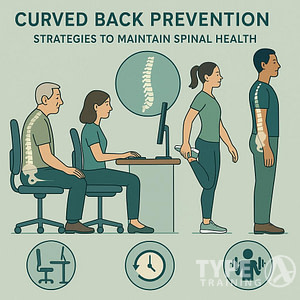Yoga breathing exercises, also known as Pranayama, have been practiced for centuries and are an essential part of yoga practice. These exercises involve controlling the breath to promote physical, mental, and emotional well-being. By incorporating yoga breathing exercises into your daily routine, you can experience numerous benefits for your mind and body.
Understanding Yoga Breathing is the first step towards experiencing the benefits of Pranayama. There are several types of yoga breathing techniques, each with its unique benefits. The basic technique involves inhaling and exhaling through the nose, focusing on the breath, and slowing down your breathing rate. As you become more proficient, you can try more advanced techniques like Ujjayi, Bhastrika, and Nadi Shodhana.
The Science Behind Yoga Breathing is fascinating. Studies have shown that yoga breathing exercises can have a positive impact on the nervous system, reduce stress and anxiety, improve lung function, and boost the immune system.
The Science Behind Yoga Breathing is fascinating. Studies have shown that yoga breathing exercises can have a positive impact on the nervous system, reduce stress and anxiety, improve lung function, and boost the immune system. Additionally, yoga breathing exercises can help regulate
Popular posts:
Key Takeaways
- Yoga breathing exercises involve controlling the breath to promote physical, mental, and emotional well-being.
- There are several types of yoga breathing techniques, each with its unique benefits.
- Yoga breathing exercises can have a positive impact on the nervous system, reduce stress and anxiety, improve lung function, and boost the immune system.
Understanding Yoga Breathing
Breathing is a fundamental part of yoga practice. In fact, it is one of the core elements of yoga. Yogic breathing, also known as pranayama, refers to conscious and controlled breathing that matches the rhythm of yoga postures. Here’s what you need to know about yoga breathing:
The Basics of Yoga Breathing
Yoga breathing is all about controlling your breath. It involves inhaling and exhaling in a specific way to achieve a particular effect. In yoga, breathing is considered to be the bridge between the body and the mind. By controlling your breath, you can calm your mind, reduce stress, and improve your overall health.
The Benefits of Yoga Breathing
Yoga breathing has numerous benefits. It can help you relax, reduce stress, and improve your mental and physical health. Here are some of the benefits of yoga breathing:
- Reduces stress: Yoga breathing can help you relax and reduce stress. It has been shown to reduce the levels of cortisol, a hormone associated with stress.
- Improves lung function: Yoga breathing can improve lung function by increasing lung capacity and strengthening the respiratory muscles.
- Boosts immunity: Yoga breathing can boost your immunity by increasing the levels of oxygen in your body and reducing inflammation.
The Different Types of Yoga Breathing
There are several different types of yoga breathing techniques. Each technique has a different effect on the body and mind. Here are a few examples:
- Ujjayi breath: Ujjayi breath is a deep, slow breathing technique that involves inhaling and exhaling through the nose while constricting the back of the throat. This technique can help calm the mind and reduce stress.
- Kapalabhati breath: Kapalabhati breath is a rapid, forceful breathing technique that involves exhaling forcefully through the nose while pulling the belly in. This technique can help energize the body and improve digestion.
- Nadi Shodhana breath: Nadi Shodhana breath is a slow, rhythmic breathing technique that involves inhaling and exhaling through alternate nostrils. This technique can help balance the body and mind.
In conclusion, yoga breathing is an essential part of yoga practice. By controlling your breath, you can calm your mind, reduce stress, and improve your overall health. There are different types of yoga breathing techniques, each with its own benefits.
Science Behind Yoga Breathing
Yoga breathing exercises, also known as pranayama, are an essential part of the yoga practice. These exercises involve conscious and controlled breathing, which can have a significant impact on your body, mind, and nervous system. In this section, we will explore the science behind yoga breathing and how it can benefit you.
Prana and the Body
According to yogic philosophy, prana is the life force that flows through every living being. Yoga breathing exercises aim to control and direct this prana to promote physical and mental well-being. When you practice yoga breathing, you take in more oxygen and expel more carbon dioxide, which can have several positive effects on your body. These effects include:
- Lowering heart rate and
blood pressure - Increasing lung capacity
- Boosting immunity
- Improving digestion
- Reducing inflammation
Yoga Breathing and the Mind
Yoga breathing exercises can also have a profound impact on your mind. When you practice pranayama, you focus your attention on your breath, which can help calm your mind and reduce stress and anxiety. Scientific research has shown that yoga breathing can:
- Reduce symptoms of anxiety and depression
- Improve cognitive function
- Increase feelings of relaxation and well-being
- Enhance emotional regulation
The Nervous System and Yoga Breathing
Yoga breathing exercises can also have a significant impact on your nervous system. The autonomic nervous system is responsible for regulating many of your body’s automatic functions, such as heart rate and digestion. It is divided into two branches: the sympathetic nervous system (SNS) and the parasympathetic nervous system (PNS).
The SNS is responsible for the “fight or flight” response, which prepares your body to respond to stress or danger. The PNS, on the other hand, is responsible for the “rest and digest” response, which promotes relaxation and healing. Yoga breathing exercises can help balance these two systems, promoting relaxation and reducing stress. Research has shown that yoga breathing can:
- Reduce cortisol levels (a stress hormone)
- Increase heart rate variability (an indicator of a healthy nervous system)
- Stimulate the vagus nerve (which promotes relaxation and digestion)
In conclusion, the science behind yoga breathing is fascinating and has been studied extensively. The benefits of pranayama are numerous and can have a positive impact on your body, mind, and nervous system. By incorporating yoga breathing exercises into your daily routine, you can experience these benefits and improve your overall well-being.
Types of Yoga Breathing Techniques
There are several types of yoga breathing techniques, also known as pranayama, each with its own unique benefits. By practicing these techniques, you can improve your overall well-being and enhance your yoga practice. Here are some of the most common types of yoga breathing techniques:
Controlled Breathing
Controlled breathing, also known as diaphragmatic breathing, is a simple yet effective technique that involves taking deep breaths from your diaphragm. This technique can help you relax, reduce stress, and increase your lung capacity. To practice controlled breathing, sit or lie down in a comfortable position and breathe in deeply through your nose, filling your lungs with air. Hold your breath for a few seconds, then exhale slowly through your mouth, emptying your lungs completely. Repeat this process several times, focusing on your breath and relaxing your body.
Alternate Nostril Breathing
Alternate nostril breathing, also known as nadi shodhana, is a technique that involves breathing through one nostril at a time while blocking the other nostril with your fingers. This technique can help balance your energy, calm your mind, and improve your concentration. To practice alternate nostril breathing, sit in a comfortable position and place your left hand on your left knee. Use your right hand to block your right nostril and inhale deeply through your left nostril. Hold your breath for a few seconds, then use your right thumb to block your left nostril and exhale through your right nostril. Repeat this process several times, alternating nostrils each time.
Ujjayi Breathing
Ujjayi breathing, also known as ocean breath, is a technique that involves breathing through your nose while constricting the back of your throat, creating a hissing sound. This technique can help you focus your mind, regulate your body temperature, and improve your lung capacity. To practice ujjayi breathing, sit in a comfortable position and inhale deeply through your nose, then exhale slowly through your mouth, making a “ha” sound. Next, close your mouth and inhale deeply through your nose while constricting the back of your throat, creating a hissing sound. Exhale slowly through your nose, making the same hissing sound. Repeat this process several times, focusing on your breath and the sound it creates.
Other Types of Yoga Breathing Techniques
In addition to the above techniques, there are several other types of yoga breathing techniques that you can practice to enhance your yoga practice and improve your overall well-being. These include:
- Breath of Fire: A technique that involves rapid, shallow breathing through your nose, which can help you energize your body and improve your focus.
- Skull Shining Breath: A technique that involves rapid, forceful exhalations through your nose, which can help you clear your mind and increase your energy.
- Three-Part Breath: A technique that involves breathing in three parts – first into your belly, then your ribcage, and finally your chest – which can help you relax and reduce stress.
- 4-7-8 Breath: A technique that involves inhaling for four counts, holding your breath for seven counts, and exhaling for eight counts, which can help you calm your mind and reduce anxiety.
By practicing these types of yoga breathing techniques, you can improve your overall health and well-being, as well as enhance your yoga practice.
Benefits of Yoga Breathing for Mental Health
Yoga breathing exercises, also known as pranayama, have been used for thousands of years to improve mental health and well-being. Incorporating these exercises into your daily routine can have a positive impact on your mental health in several ways.
Reduces Stress and Anxiety
Yoga breathing exercises can help reduce stress and anxiety by slowing down your heart rate and breathing. When you are stressed or anxious, your breathing becomes shallow and rapid, which can increase your heart rate and make you feel more anxious. By practicing deep breathing exercises, you can slow down your breathing and heart rate, which can help you feel more calm and relaxed.
Improves Attention and Awareness
Yoga breathing exercises can also improve your attention and awareness. When you focus on your breath during these exercises, you are practicing mindfulness, which can help you stay present and focused in the moment. This can be especially helpful if you struggle with racing thoughts or have difficulty staying focused.
Enhances Mental Well-being
Yoga breathing exercises can enhance your overall mental well-being by promoting a sense of calm and relaxation. When you are able to control your breathing, you can also control your thoughts and emotions. This can help you feel more in control of your life and less overwhelmed by stressors.
Incorporating yoga breathing exercises into your daily routine can have a significant impact on your mental health and well-being. By reducing stress and anxiety, improving attention and awareness, and enhancing your mental well-being, these exercises can help you feel more calm, centered, and in control.
Benefits of Yoga Breathing for Physical Health
Yoga breathing exercises, also known as pranayama, can have a positive impact on your physical health. Here are some of the benefits:
Improved Respiratory Function
Yoga breathing exercises can improve your respiratory function by increasing lung capacity and strengthening the diaphragm, chest, and abdominal muscles. This can lead to better oxygenation of the blood and improved overall health.
Reduced Risk of Heart Disease and Diabetes
Research has shown that yoga breathing exercises can help reduce the risk of heart disease and diabetes by lowering
Improved Digestion
Yoga breathing exercises can also improve digestion by increasing blood flow to the digestive organs and stimulating the parasympathetic nervous system. This can help alleviate digestive issues such as constipation, bloating, and indigestion.
In addition to these benefits, yoga breathing exercises can also help with a variety of other physical health issues, including cancer cells, chronic obstructive pulmonary disease (COPD), and more. By incorporating pranayama into your yoga practice, you can improve your overall physical health and well-being.
Yoga Breathing and Longevity
Yoga breathing exercises, also known as pranayama, can help you improve your life force and energy levels, which can have a positive impact on your overall health and longevity.
Aging and Longevity
As you age, your lung capacity decreases, which can lead to a variety of health issues. However, regular practice of yoga breathing exercises can help improve your lung capacity, which can help you maintain your health and vitality as you age. By improving your lung capacity, you can also increase your oxygen intake, which can help reduce the risk of chronic diseases such as heart disease, diabetes, and cancer.
Life Force and Energy
In yoga philosophy, the concept of prana refers to the life force or energy that flows through all living things. Yoga breathing exercises can help you increase your prana, which can help you feel more energized and alive. By focusing on your breath and increasing your prana, you can also improve your mental clarity and focus, which can help you be more productive and efficient in your daily life.
Energizing and Energize
Yoga breathing exercises can help you feel more energized and refreshed, even after a long day. By practicing deep breathing exercises, you can increase the amount of oxygen in your body, which can help you feel more alert and awake. Additionally, yoga breathing exercises can help you reduce stress and anxiety, which can have a positive impact on your overall energy levels and vitality.
In conclusion, yoga breathing exercises can help you improve your lung capacity, increase your life force and energy levels, and feel more energized and refreshed. By incorporating regular yoga breathing exercises into your daily routine, you can improve your overall health and longevity, and enjoy a happier, more vibrant life.
Yoga Breathing and Immune System
Yoga breathing exercises, also known as pranayama, have been shown to have a positive impact on the immune system. Here are three ways that yoga breathing can boost your immune system:
Reducing Stress Hormones
Stress is known to have a negative impact on the immune system, making you more susceptible to diseases. Yoga breathing exercises can help to reduce stress hormones like cortisol, which can help to boost your immune system. By practicing yoga breathing regularly, you can help to keep your stress levels in check and improve your overall health.
Conditioning Lungs and Respiratory Tract
Yoga breathing exercises are designed to help you breathe more deeply and efficiently. This can help to condition your lungs and respiratory tract, making them stronger and more resilient. By practicing yoga breathing regularly, you can help to improve your lung capacity and reduce your risk of respiratory diseases.
Stimulating the Lymphatic System
The lymphatic system is responsible for removing toxins and waste from the body. Yoga breathing exercises can help to stimulate the lymphatic system, helping to flush out toxins and improve your overall health. By practicing yoga breathing regularly, you can help to support your immune system and reduce your risk of diseases.
In conclusion, yoga breathing exercises can have a positive impact on the immune system by reducing stress hormones, conditioning the lungs and respiratory tract, and stimulating the lymphatic system. By incorporating yoga breathing into your daily routine, you can help to improve your overall health and reduce your risk of diseases.
Yoga Breathing in Daily Life
Yoga breathing, also known as pranayama, is a powerful tool that can benefit you in many ways. Here are some ways you can incorporate yoga breathing into your daily life:
Practice
Yoga breathing can be a valuable addition to your yoga practice. By incorporating specific breathing techniques into your yoga routine, you can enhance your physical and mental well-being. For example, practicing deep breathing during yoga can help you relax and reduce stress.
Tool
Yoga breathing can also be used as a tool to help you manage stress and anxiety in your daily life. By taking a few deep breaths when you feel overwhelmed, you can calm your mind and reduce feelings of anxiety. This can be especially helpful in high-stress situations, such as public speaking or job interviews.
Connection
Yoga breathing can also help you connect with yourself and others. By focusing on your breath, you can become more present in the moment and develop a greater sense of awareness. This can help you build stronger relationships and improve your overall sense of well-being.
Relationships
Yoga breathing can also be used as a tool to improve your relationships with others. By practicing deep breathing exercises with a partner or friend, you can create a sense of connection and intimacy. This can be especially helpful in romantic relationships, where deep breathing can be used as a form of foreplay.
Balance
Yoga breathing can help you find balance in your life. By practicing deep breathing exercises regularly, you can develop a greater sense of inner peace and calm. This can help you manage stress and anxiety more effectively, and improve your overall quality of life.
Survival
Finally, yoga breathing can be a valuable tool for survival in emergency situations. By practicing deep breathing exercises regularly, you can develop the ability to remain calm and focused in high-stress situations. This can be especially helpful in situations where quick thinking and a clear mind are essential, such as during a natural disaster or other crisis.
Incorporating yoga breathing into your daily life can have a profound impact on your physical, mental, and emotional well-being. By practicing deep breathing exercises regularly, you can develop a greater sense of awareness, improve your relationships with others, and find greater balance and peace in your life.
Conclusion
In conclusion, practicing yoga breathing exercises, or pranayama, can have numerous benefits for your physical and mental health. By incorporating pranayama into your yoga practice, you can improve your overall well-being and enhance your yoga experience.
Physical Benefits
Practicing pranayama can have numerous physical benefits, including improving lung function, reducing
Mental Benefits
In addition to physical benefits, pranayama can also have numerous mental benefits, including reducing stress and anxiety, improving focus and concentration, and promoting relaxation and better sleep. By incorporating pranayama into your yoga practice, you can enhance your ability to manage stress and improve your overall mental health and well-being.
Different Types of Pranayama
There are many different types of pranayama, each with its own unique benefits and techniques. Some popular types of pranayama include Ujjayi, Kapalabhati, and Nadi Shodhana. By exploring different types of pranayama and finding the techniques that work best for you, you can enhance your yoga practice and experience the many benefits of pranayama.
In summary, practicing yoga breathing exercises, or pranayama, can have numerous physical and mental benefits. By incorporating pranayama into your yoga practice and exploring different techniques, you can improve your overall health and well-being and enhance your yoga experience.
Related Post
Frequently Asked Questions
What are the benefits of Nadi Shodhana pranayama?
Nadi Shodhana pranayama, also known as alternate nostril breathing, is a powerful breathing technique that helps to balance the body’s energy channels. This pranayama technique can help to calm the mind, reduce stress, and improve focus and concentration. It is also known to help regulate
How does Bhramari Pranayama benefit the body and mind?
Bhramari Pranayama, also known as humming bee breath, is a calming breathing technique that can help to reduce stress and anxiety. This pranayama technique involves making a humming sound while exhaling, which can help to slow down the heart rate and calm the nervous system. It is also known to help improve concentration, memory, and overall brain function.
What are the advantages of Ujjayi Pranayama?
Ujjayi Pranayama, also known as ocean breath, is a breathing technique that can help to calm the mind, reduce stress, and improve focus and concentration. This pranayama technique involves breathing in and out through the nose, while constricting the back of the throat to create a soft, ocean-like sound. It is also known to help improve lung function, increase oxygenation of the blood, and boost immunity.
What are the health benefits of Anuloma pranayama?
Anuloma Pranayama, also known as alternate nostril breathing, is a powerful breathing technique that can help to balance the body’s energy channels. This pranayama technique can help to calm the mind, reduce stress, and improve focus and concentration. It is also known to help regulate
How does belly breathing in yoga improve health?
Belly breathing, also known as diaphragmatic breathing, is a breathing technique that involves breathing deeply into the belly. This pranayama technique can help to reduce stress, improve digestion, and boost immunity. It is also known to help improve lung function, increase oxygenation of the blood, and reduce the risk of chronic diseases.
What are the benefits of practicing pranayama regularly?
Regular practice of pranayama can help to improve overall health and wellbeing. Pranayama techniques can help to reduce stress, improve focus and concentration, boost immunity, regulate













